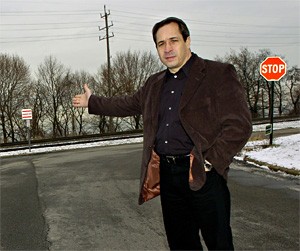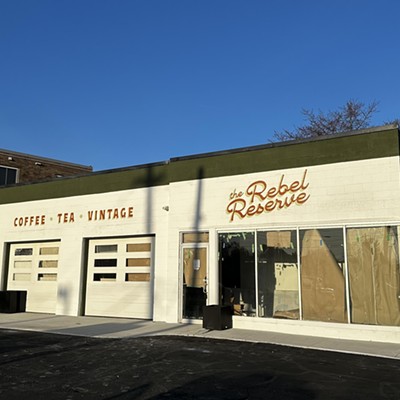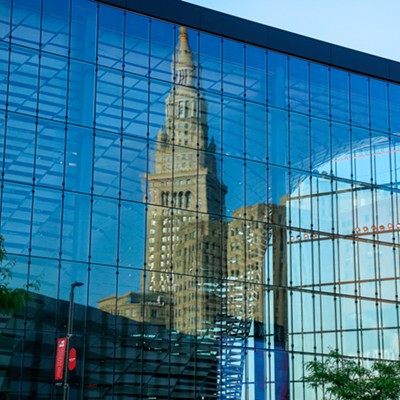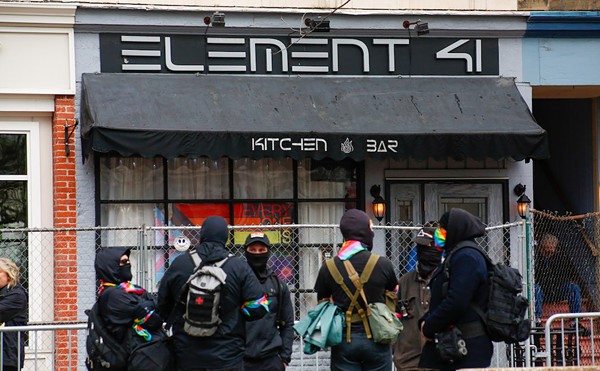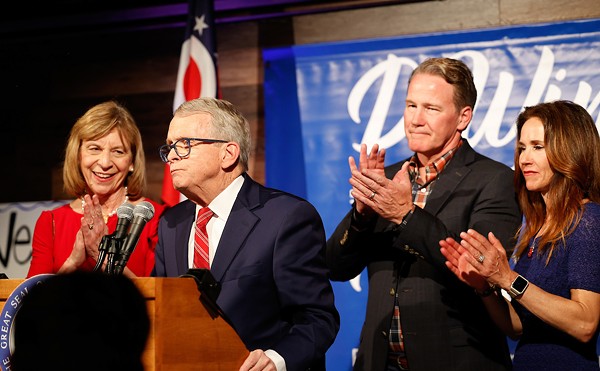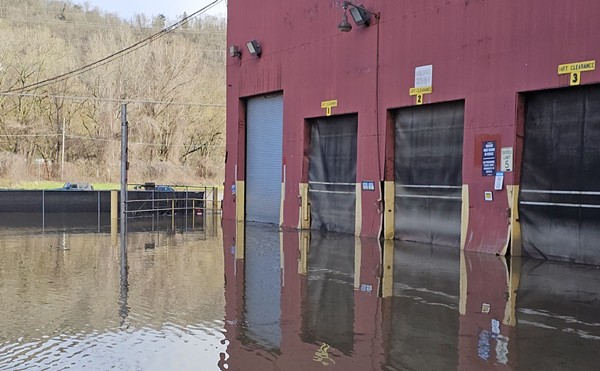From the third-floor window of his angular, Chicago-style walk-up, Jason Wright's view is the kind real-estate fliers are made of. To the east he can see the downtown skyline. To the north, the white-capped waves of Lake Erie. And directly below lies a grid of freshly paved concrete streets, a daily reminder of his investment in what he hopes is an up-and-coming neighborhood: Battery Park.
The $110 million development, on a former Eveready plant in the Detroit-Shoreway neighborhood, was built to attract young families and singles searching for an urban — but not too urban — oasis. Its residents run the gamut from real-estate investors to schoolteachers to Wright, a 25-year-old who happens to make his living as the Browns' No. 2 running back. "I knew I wanted to live in the city," he says. "And this was the perfect place."
It's all part of a $400 million plan to revitalize Detroit-Shoreway. In Battery Park, that includes 300 more condos as well as fitness and community centers and restaurants. But the hallmark of the deal — the thing that lured Wright and other new homeowners here — is the plan to tear down the West Shoreway and turn it into a boulevard, allowing streets near theirs to roll straight to the lake. It would, no doubt, complete Wright's almost-urban utopia — that is, if it ever happens.
The Shoreway project was born in 2002, when local businessmen financed a study on how Cleveland could make better use of its shoreline. The city bought into the idea, drawing up a plan with a fancy name — "Connecting Cleveland: The Waterfront District Plan" — and grand ambitions. It called for the port to move from its location next to Browns Stadium and for a golf course to be built on the northeast corner of Burke Lakefront Airport. The port's move is still in the works. The golf course died a slow death at the hands of the FAA.
The final piece was the Shoreway, the western suburbs' personal lakeside freeway. The high-speed road would morph into a slow-moving, tree-lined boulevard, with five intersections between West 28th and West 73rd. It would allow Ohio City and Detroit-Shoreway residents to drive straight to the lake — or, if they felt safe traversing the sometimes questionable 'hoods in their way, even walk or bike. And money, it seemed, wouldn't doom the project: The state would pick up the tab, estimated at $50 million.
"The intersections would create much-needed access for us," says councilman Matt Zone, who represents Detroit-Shoreway. "Right now we're greatly sealed off."
But while the plan had Zone daydreaming about pleasant walks to the lake, it had some West Siders' heads jammed with visions of gridlock. The plan called for ramps that connect the Shoreway with Edgewater Drive and Lake Avenue to be torn up. Removing them would open nine acres of parkland. But it also would slow the ride in and out of Lakewood and neighboring suburbs.
Councilman Jay Westbrook, who represents the northwest edge of Cleveland, recognized the potential peril of becoming The Guy Who Doubled My Commute, so he fought the ramps' removal. His opponents, including former city planner Chris Ronayne, insisted that the project would lure customers to local businesses and spur development in the neighborhoods. Opening the park, they argued, would benefit everyone.
The city chose to deal with the controversy the way seasoned bureaucrats often do: by leaving the hard part for their successors. They'd tackle the first part of the plan — including intersections at 45th, 54th, and 73rd streets — and leave the ramps for later. Bulldozers were supposed to show up this year.
But then, last summer, thousands of miles away in Minneapolis, a bridge collapsed into the Mississippi river. The disaster killed 13 people, injured 144, and sent officials throughout the country peeking under their bridges, assessing the strength of the plates that held them up.
In Ohio, engineers discovered that the steel plates connecting beams that hold up the I-90 bridge, a major thoroughfare downtown, had deteriorated. Fixing it — a $142 million rehab — is expected to make one of Cleveland's most-used stretches of highway a temporary traffic nightmare. Drivers will be forced to plot alternate routes. And they'll look to the Shoreway. If they arrive to find an under-construction boulevard — tree-lined or not — the city could face a commuter mutiny.
Somehow, Mayor Frank Jackson remains committed to starting the Shoreway project as soon as possible, says City Planner Bob Brown. But Brown himself sounds less certain. "It creates significant traffic issues," he says of the I-90 construction, adding cryptically: "It requires more conversation between the city and [the state] before we get a set date." For his part, Councilman Zone says construction will start in 2010. But he's got to keep voters with new mortgages happy. State officials — the guys with the money — predict nothing will happen until 2012.
The longer it's delayed, the less likely that there will be money to pay for it. Rising fuel prices and engineering snafus have already sent the project's cost near $65 million, $15 million more than the state is on the hook for. And that doesn't include the cost of removing the western ramps.
"We're in a tough situation," says Brown. "[The state] is tapped out, so the city will have to come up with it in other ways." He pauses, exhaling deeply. "We're searching for any funding."
Meanwhile, the wait continues.
"We've been telling people for four to seven years about this plan," explains Zone, driving through Battery Park on an overcast winter day. "But the timeline keeps on getting pushed back." He slows down and puts the car in park. In front of him sit two sets of railroad tracks. Somewhere below lies the West Shoreway. Rising up on the horizon is Lake Erie. "The project will happen," he says.

